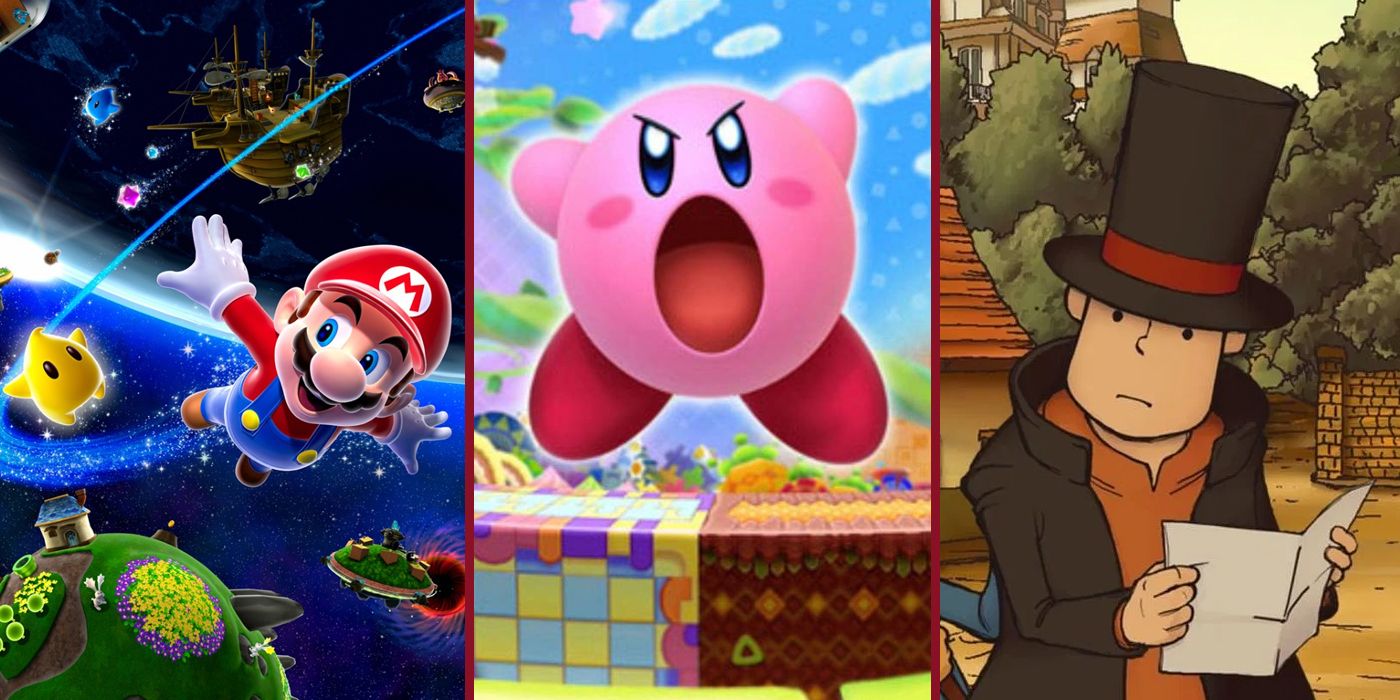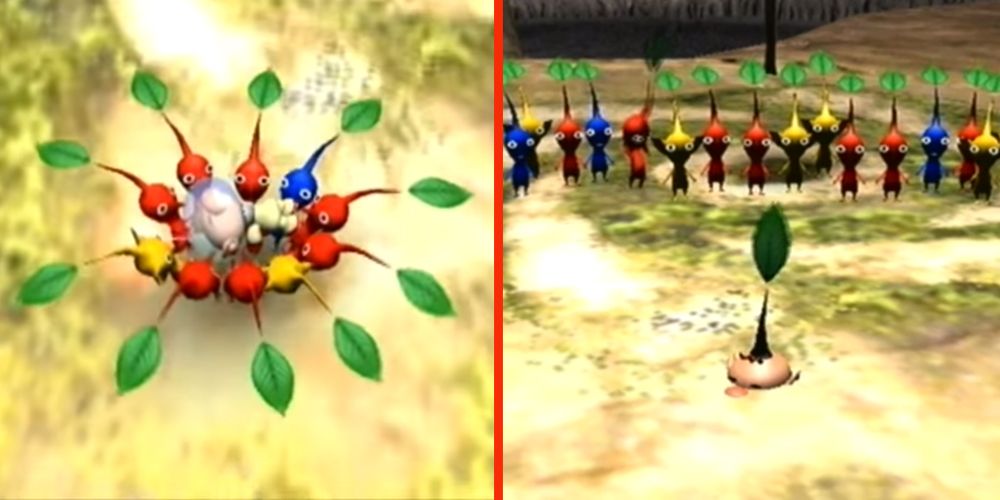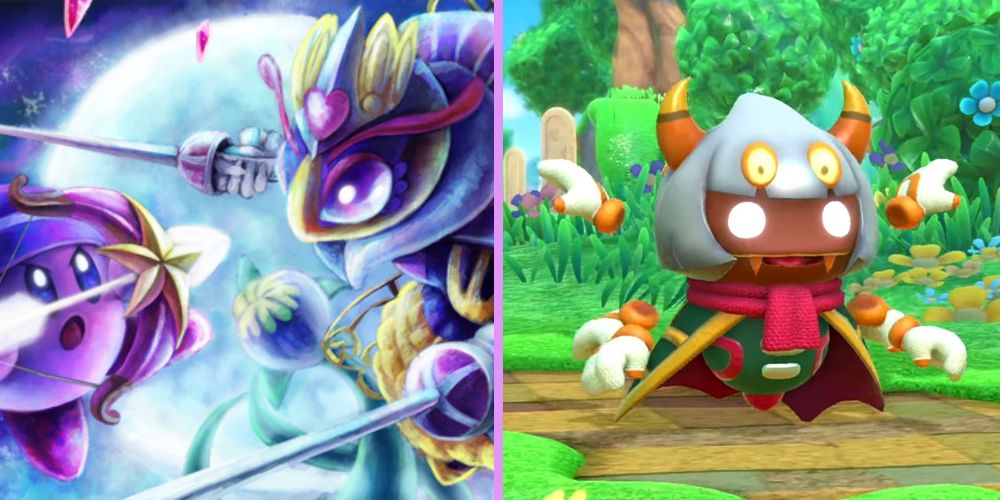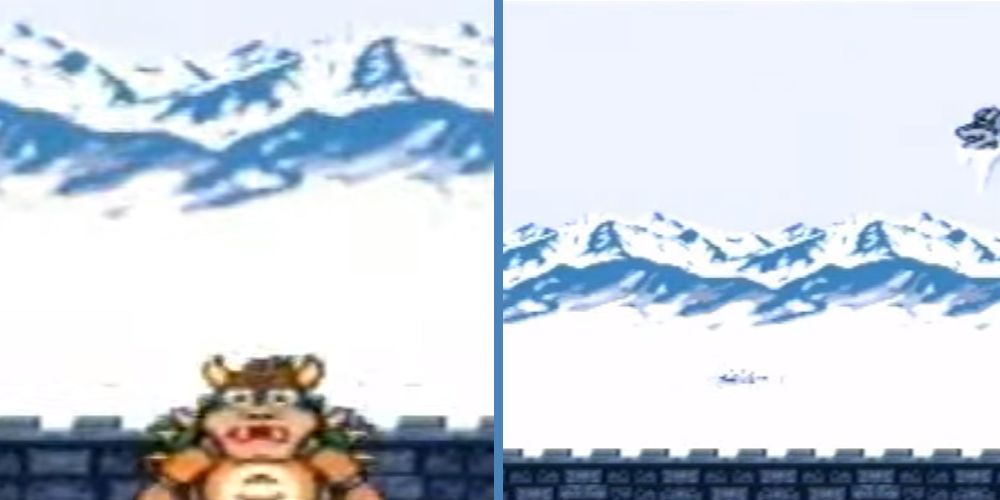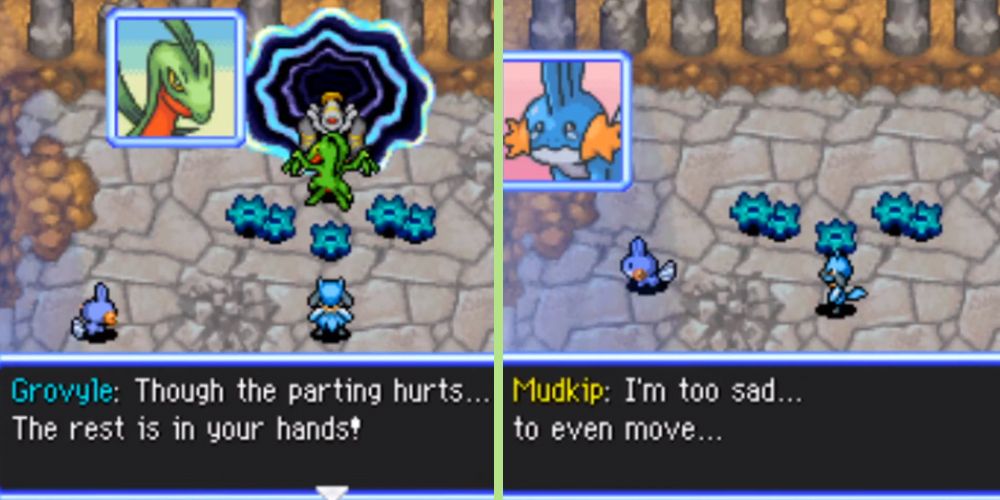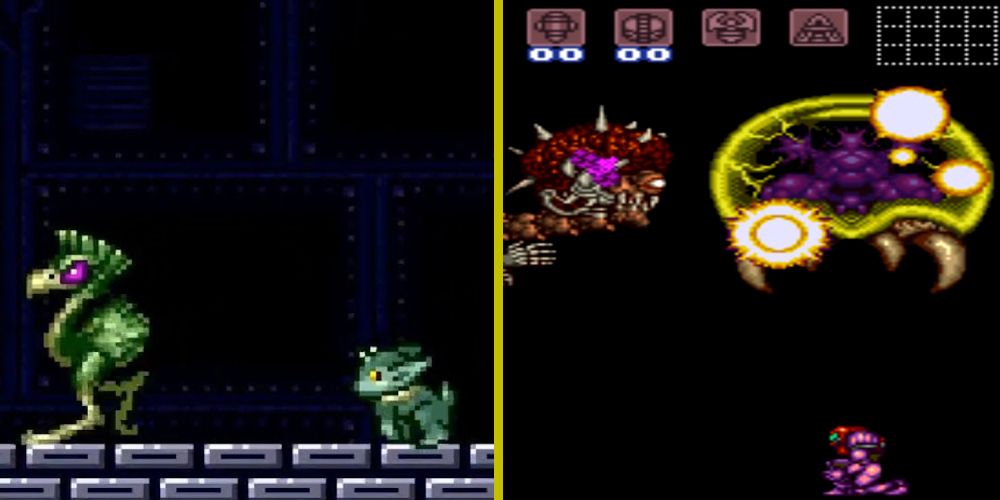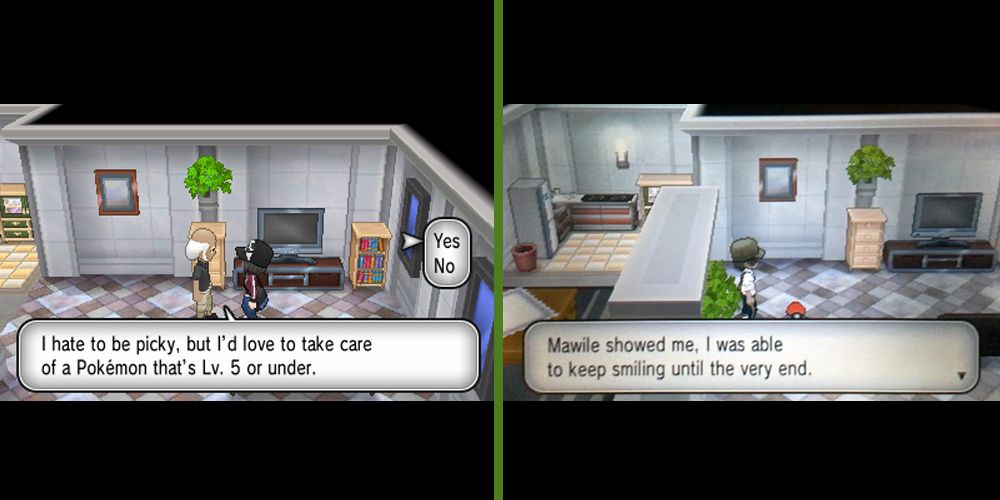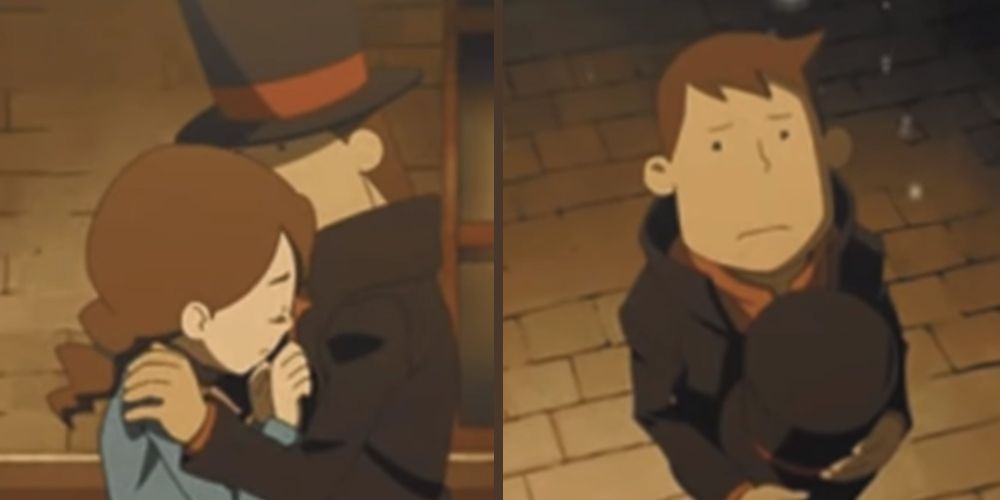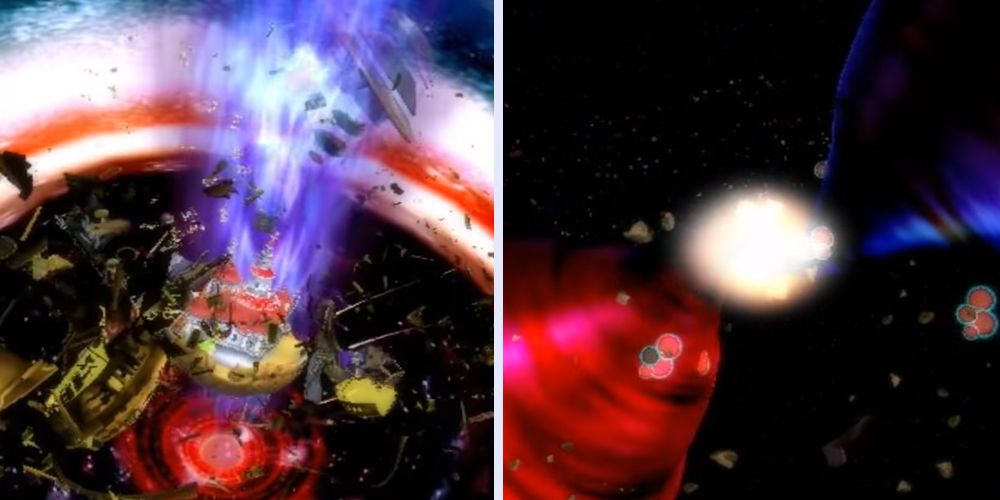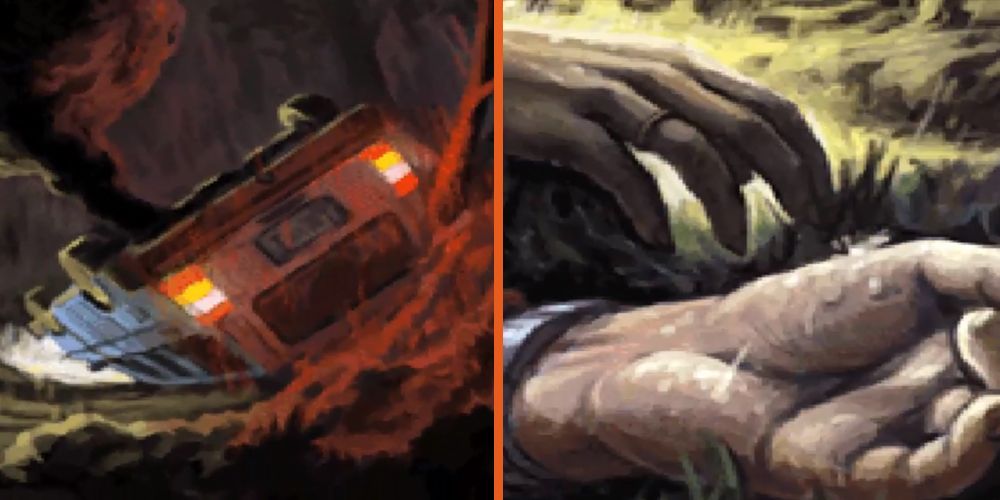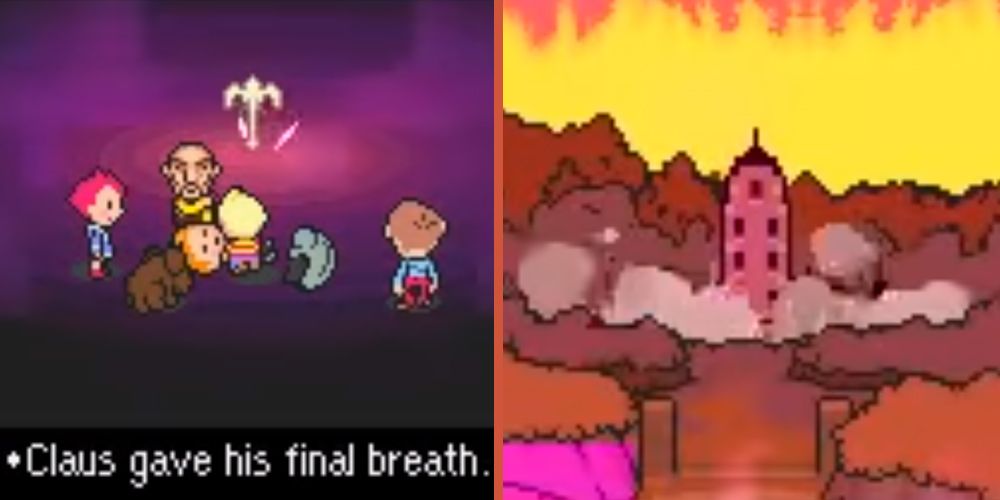Throughout the nineties, Nintendo of America's strict content guidelines helped to foster a family-friendly image. Plenty of Nintendo titles were heavily censored when they arrived in the West and although mature themes still found their way into Nintendo games, they were few and far between. The times they are a-changing though, albeit, slowly.
As gaming has matured as a medium, so too has Nintendo as a company. The themes of death and loss that were once so heavily moderated are creeping into more and more Nintendo titles. Some games, however, are more like the company itself. They start out easygoing and carefree before arriving at a narrative climax that is far darker in tone than the events found throughout the rest of the game.
10 Pikmin
Whether or not the player receives the 'bad' ending in Pikmin is entirely dependent on how many ship parts they are able to collect within the game's 30-day time limit. If they secure fewer than 25, Olimar's ship will crash-land moments after take-off and he will seemingly die upon impact. Thankfully though, the Pikmin are on hand and turn him into one of them.
This might not seem like a particularly bad ending until one considers the typical lifespan of a Pikmin. While it is possible to complete a campaign without a single Pikmin dying, most peoples' play-throughs usually lead to countless casualties. Furthermore, without an Olimar type leader to guide the little Pikmin, the average life expectancy will probably plummet further still.
9 Kirby: Triple Deluxe
Considering their intended audience, some of the more recent Kirby games explore some surprisingly mature themes. Although there are several with somewhat tragic endings, Kirby: Triple Deluxe is arguably the darkest of the bunch.
Sectonia may make for a great antagonist, but there was a time when she was a fair and just leader. Unfortunately, however, she was corrupted by the Dimensional Mirror causing her to become unstable. As a result, one of her closest and most loyal friends, Taranza, has little choice but to team up with Kirby to bring about her death.
8 Mario Is Missing
Mario is Missing is the epitome of a bad spin-off title. It's one of those games that tries to educate players while putting the bare minimum amount of effort into its gameplay. It's incredibly monotonous to the point where, in spite of its short length, very few players will make it all the way to the end. Those who do, though, will find a rather shocking conclusion.
Although it's presented innocently enough, the game's closing scenes show Mario and Luigi firing Bowser out of a cannon. He then crashes into some snow, freezes to death, and shatters into a thousand pieces. While the antagonist has certainly experienced plenty of pain throughout the Mario series, this is the first and only time that Bowser literally dies. It feels incredibly out of place when compared not only with the tone of the rest of the game but the entire series in general.
7 Pokémon Mystery Dungeon: Explorers Of Sky
Most of the Pokémon Mystery Dungeon games feature sad and tragic endings, but few can match Explorers of Sky when it comes to the emotional weight provided by the game's climax. During the game, the player is tasked with preventing a bleak future by changing the events of the present. In doing so, however, they risk falling foul of the Grandfather Paradox and erasing their own existence.
Even knowing what will happen, Grovyle decides to sacrifice itself by pushing Dusknoir back through the time portal. In a game that places such a strong emphasis on friendship, it's an incredibly touching moment. Given that it's a game that's primarily aimed at children though, it's also a pretty dark way to wrap up the main story.
6 Super Metroid
Despite its dark and foreboding atmosphere, Super Metroid's 'dark' moments tend to be reserved for the game's beginning and end. After Ridley destroys the Ceres Space Colony during the game's opening moments, it becomes a fairly straightforward story about killing aliens. That's certainly the case until the game's closing moments, at least.
The infant Metroid that had once seen Samus as a mother figure has now reached adolescence and returns to save her from Mother Brain in the fantastic final boss battle. After refilling Samus' health, the Metroid is killed by Mother Brain and its corpse is used to power up Samus' weapon. If that wasn't dark enough, it's also possible to leave some of Planet Zebes' wildlife to face certain death when the planet explodes a short time later.
5 Pokémon X & Y
Pokémon X & Y are fairly typical for entries in the franchise, but there's an optional side quest found in Anistar City with an incredibly dark pay-off. If the player visits the old man's house near the boutique, they'll meet the aforementioned character. He's deeply depressed due to the death of his wife and asks the player for a low-level Pokémon to keep him company. This seems wholesome enough and is a great chance for the player to do a good deed. It takes a turn though.
If the player returns to the old man's house after defeating the Elite Four, they'll find that he has passed away. Before his death, however, he wrote a nice letter thanking the player for their kindness. After reading the letter, the player can reclaim their Pokémon as well as a Comet Shard as a reward. The whole encounter is every bit as sad as some of the series' darker Pokédex entries.
4 Professor Layton & The Unwound Future
The Professor Layton series tackles some fairly serious subject matter from time to time. It generally doesn't get too dark though with the exception, perhaps, of the final game in the original trilogy. The Unwound Future referenced in the game's title is a pretty horrible place and one that most would be keen to avoid visiting. Although Layton is eventually able to put things right, there's one final tragic twist at the end.
After the game's main antagonist has been arrested, it's revealed that Layton's girlfriend Claire is actually still alive. She was presumed dead following a terrible explosion some years prior but had actually traveled to the future. The happy reunion is short-lived though, as it soon becomes apparent that her existence in the current timeline has become unstable. Despite attempts to save her, Claire is teleported back to the moment of the explosion and is killed, leaving Layton to once again mourn her death.
3 Super Mario Galaxy
Super Mario Galaxy is an incredibly lighthearted game that, like most Mario games, focuses far more on providing fantastic gameplay than it does on telling an engaging story. Unlike other titles, however, Galaxy features a rather messed up climax.
After emerging victorious from the fantastic final battle with Bowser, Mario can only watch as one of the planets collapses in on itself and creates a supermassive black hole. Just as it looks certain to consume the entire universe and all life within it, the Lumas throw themselves into the black hole, causing it to collapse and explode into a supernova. Although they are shown to have survived the explosion if the player has collected all 120 stars, for those who haven't, their sacrifice makes for an incredibly dark finale.
2 Drawn To Life: The Next Chapter
The Drawn to Life series may not be a Nintendo title by definition, but, given its exclusivity to Nintendo consoles, it may as well be. It's a fun little title in the same vein as games like Scribblenauts where players can draw objects into the game. Unlike Scribblenauts, however, the second Drawn to Life game has one of the darkest endings in gaming. It was so dark, in fact, that the game was actually rereleased with a much tamer (and somewhat nonsensical) ending.
In the original ending, it's revealed that the main character Mike is actually in a coma after being involved in a serious car crash. Fearing that Raposa will disappear if Mike wakes up, one of the game's characters attempts to kill him. Thankfully, Mike is saved by another character and comes out of his coma. This may seem like a happy ending, but he awakes to find that both of his parents died in the car crash and that his older sister Heather received permanent facial injuries. All of Raposa's inhabitants also presumably cease to exist. For anybody wondering, the game is rated "E for Everyone."
1 Mother 3
Mother 3 is the sequel to Earthbound, which is actually known as Mother 2 in Japan. Unfortunately, the game is still to receive an official Western release, although there are fan translations available online for those wishing to play it. For anyone who enjoys tragic stories, Mother 3 is not to be missed. The ending is particularly dark.
One of the game's antagonists, Claus, takes his own life. This in itself is fairly shocking for a Nintendo game, but more so because Claus is only 13 years old. After his older brother's death, Lucas then awakens a dark dragon that brings about the apocalypse. The fate of humanity is left intentionally ambiguous, but, given what's shown on screen, there's certainly cause to believe that everyone and everything dies.

